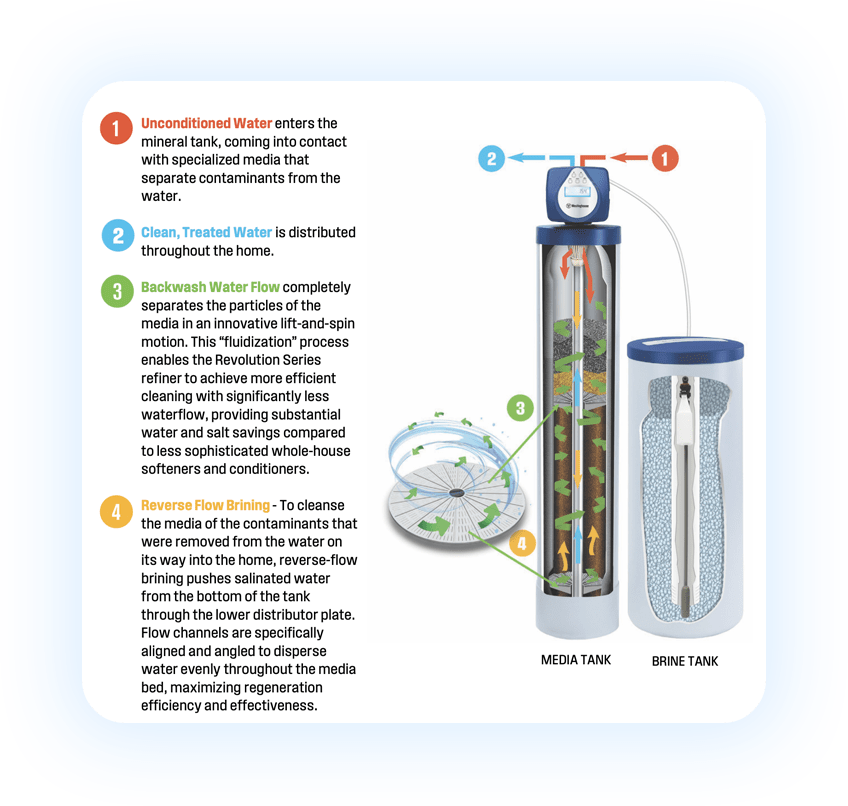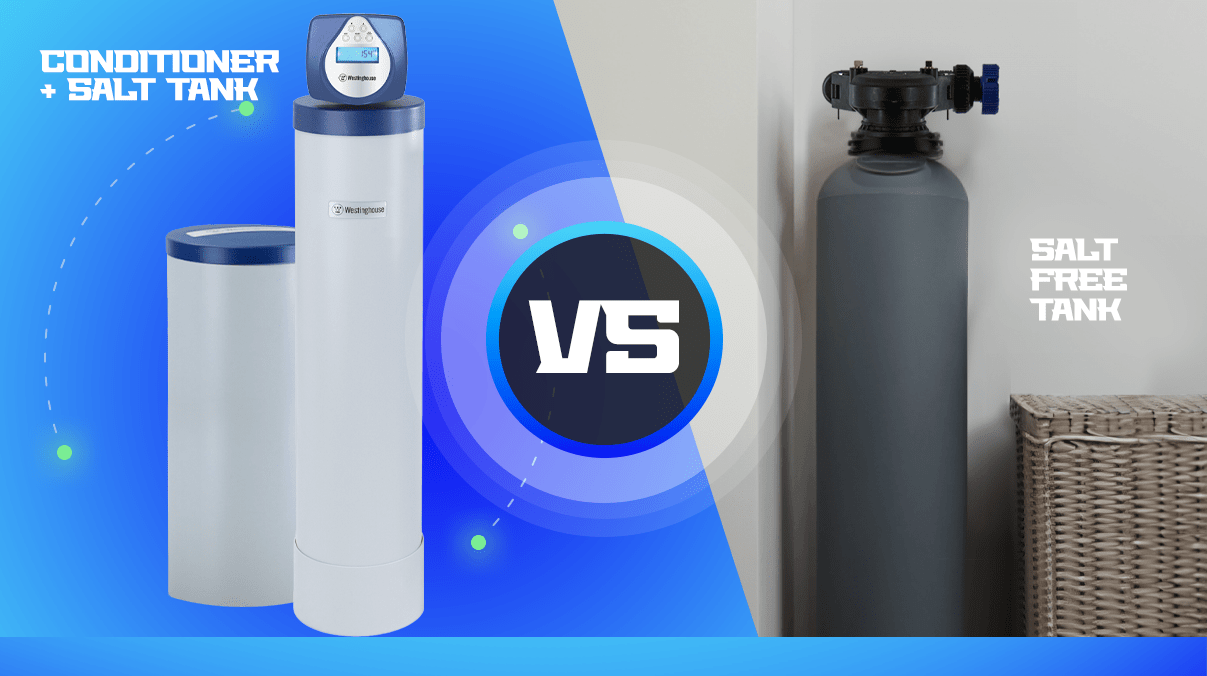When it comes to protecting your home from hard water damage and improving the quality of the water your family uses every day, the decision between a traditional salt-based system and a newer salt-free or “tankless” alternative is more important than most realize.
Both options promise cleaner water and fewer headaches. But not all filtration systems are created equal. Let’s break it down — clearly, simply, and from the perspective of what matters most to a homeowner (not a sales pitch disguised as a TED Talk).
1. What They Do (and Don’t Do)
Salt-Based Systems
These use a process called ion exchange to physically remove calcium and magnesium — the minerals that cause hard water. That’s key: they eliminate hardness, rather than just treat its symptoms.
Score: 10/10

Salt-Free (Tankless) Systems
These systems don’t remove hard minerals — instead, they try to “condition” the minerals so they behave better.
Salt-free systems attempt to alter the chemical structure of hardness minerals to reduce their tendency to stick to surfaces. The minerals remain in the water, and performance varies widely based on water chemistry. These systems condition water but do not truly soften it. It’s like tying a ribbon around a wild horse and calling it domesticated. A nice gesture, but not exactly a real solution.
Score: 3/10
Bottom Line:
If you want water that’s actually soft — not just “less rude” — salt-based wins, hands down.
🏆 Winner: Salt-Based

2. Impact on Plumbing & Appliances
Salt-Based:
By eliminating hardness minerals, salt-based systems protect internal plumbing, fixtures, water heaters, dishwashers, and washing machines from scale buildup. This translates into extended appliance life, improved efficiency, and fewer maintenance issues over time.
Score: 9/10
Salt-Free:
These systems may minimize scale, but don’t prevent it entirely. While salt-free systems may reduce scale formation, they cannot guarantee full protection. Residual minerals still have the potential to harden, particularly under heat and pressure, making full-scale prevention inconsistent at best.
Score: 5/10
Bottom Line:
For true asset protection — from pipes to major appliances — salt-based water treatment remains the gold standard.
🏆 Winner: Salt-Based

3. Maintenance & Upkeep
Salt-Based:
These systems require scheduled salt refills and occasional cleaning of the brine tank, but the process is straightforward and predictable. Maintenance cycles are well-documented, with minimal hidden costs over time.
Score: 7/10
Salt-Free:
Often marketed as “maintenance-free,” salt-free systems still require periodic filter changes and media replacement. In high-usage environments, ongoing costs and maintenance needs can match or even exceed those of salt-based units.
Score: 5/10
Bottom Line:
No system is truly hands-off, but salt-based systems offer a clear, manageable maintenance schedule — not hidden surprises.
🏆 Winner: Salt-Based (slightly)

4. Effect on Taste and Skin
Salt-Based:
Softened water improves soap lathering, reduces skin dryness, minimizes hair brittleness, and enhances the taste of foods and beverages prepared with tap water. These everyday quality-of-life improvements are often the most noticeable benefits for homeowners.
Score: 9/10
Salt-Free:
Because minerals remain in the water, many users report little to no change in taste, lathering, or skin and hair feel. The water’s “hardness behavior” might shift slightly, but tangible lifestyle benefits are limited.
Score: 4/10
Bottom Line:
When it comes to everyday experience — from morning showers to cooking — only true softened water delivers consistent, noticeable improvements.
🏆 Winner: Salt-Based

5. Cost and Longevity
Salt-Based:
While salt-based systems involve a higher initial investment, their lifespan (often 15–20 years) combined with energy savings, appliance protection, and reduced cleaning needs results in a stronger return on investment over time.
Score: 8/10
Salt-Free:
Lower upfront pricing can be attractive, but ongoing filter costs, media degradation, and less effective protection often lead to higher cumulative costs — especially when factoring in appliance repairs or replacements caused by persistent mineral buildup.
Score: 5/10
Bottom Line:
Salt-based systems may cost more on day one, but over the life of the system, they consistently deliver greater value and lower total cost of ownership.
Price is usually offset by quality or quantity. You pick.
🏆 Winner: Salt-Based

Final Word: What’s Right for Your Home?
Salt-free, tankless systems might be fine if you’re just trying to feel better about your water without actually improving it. But if you want true water softening, real protection, and water that actually feels different — the kind of water that has you wondering why you didn’t switch sooner — then a salt-based system like Westinghouse is the clear winner.
We’ll even prove it. Schedule a free in-home water test and see exactly what’s in your water — and how we can fix it without the fluff, the filters, or the fine print.


